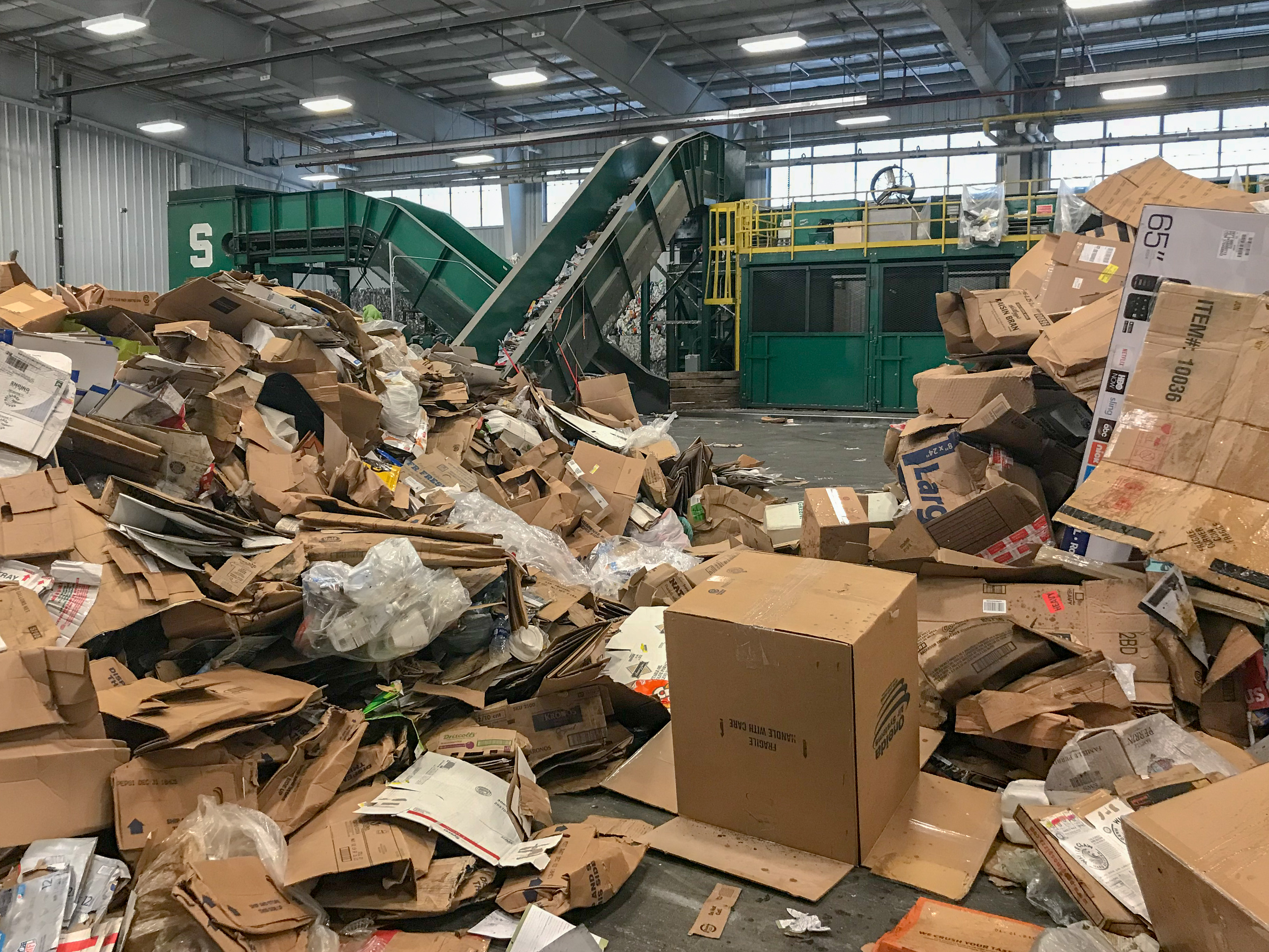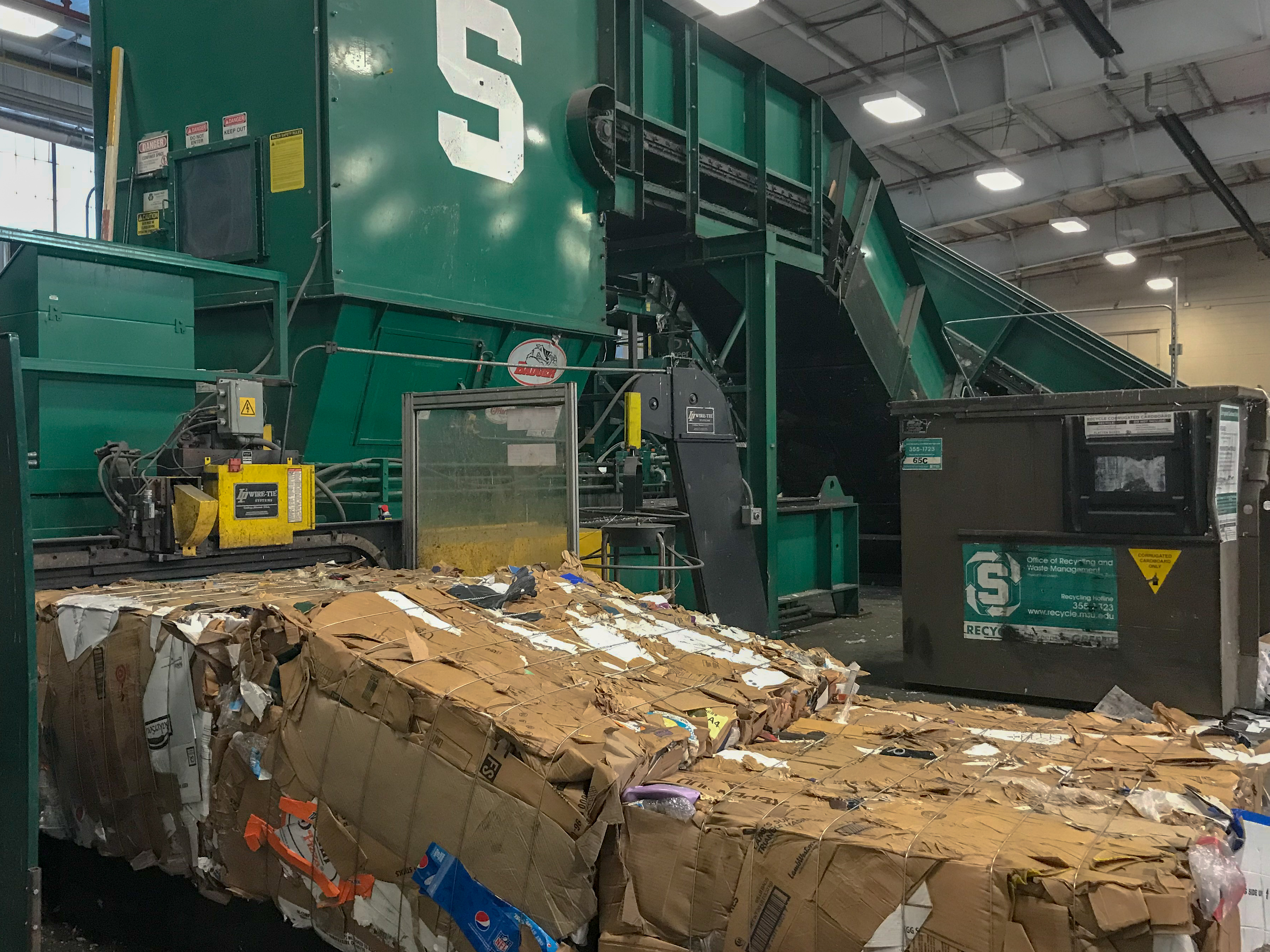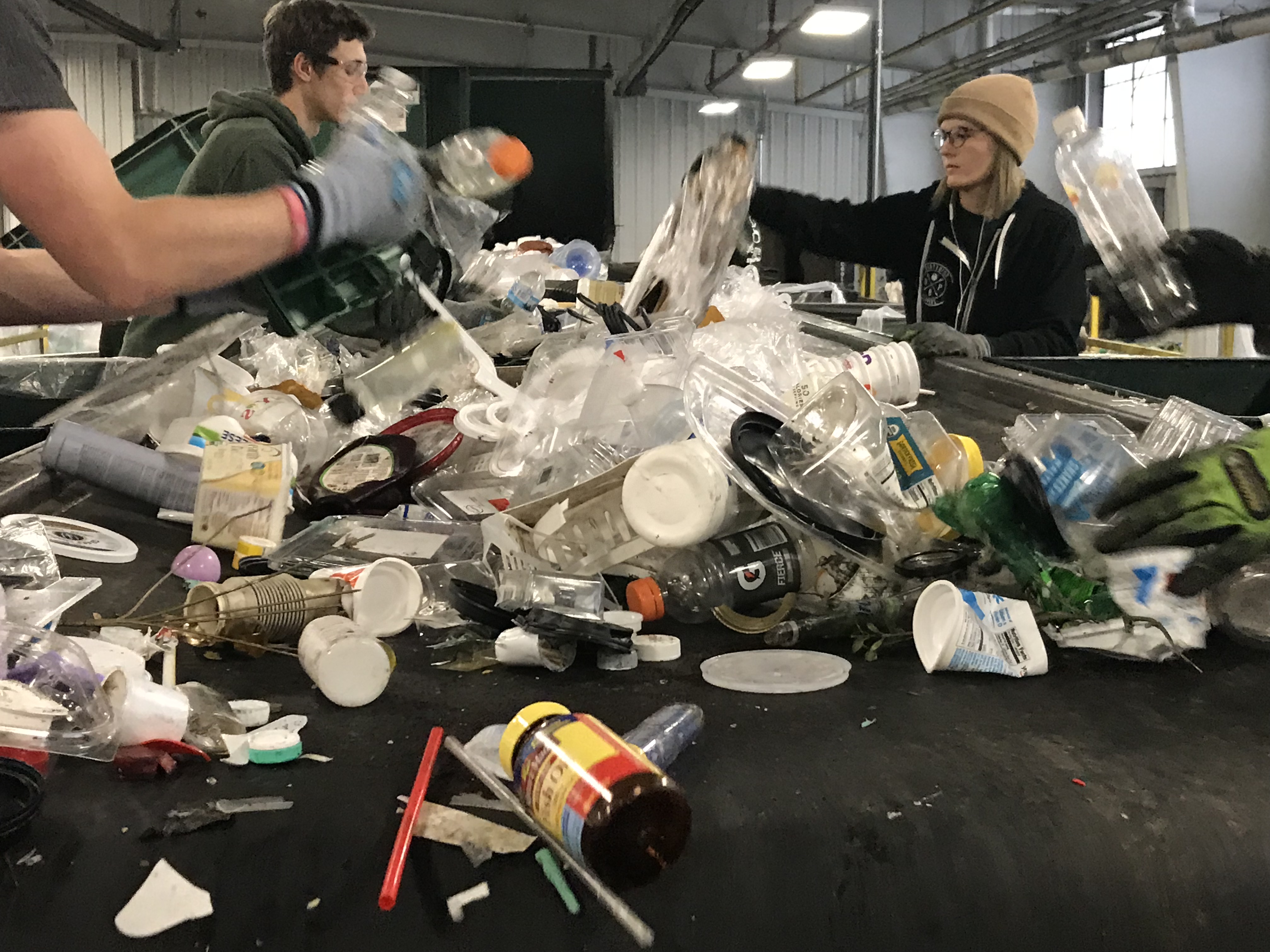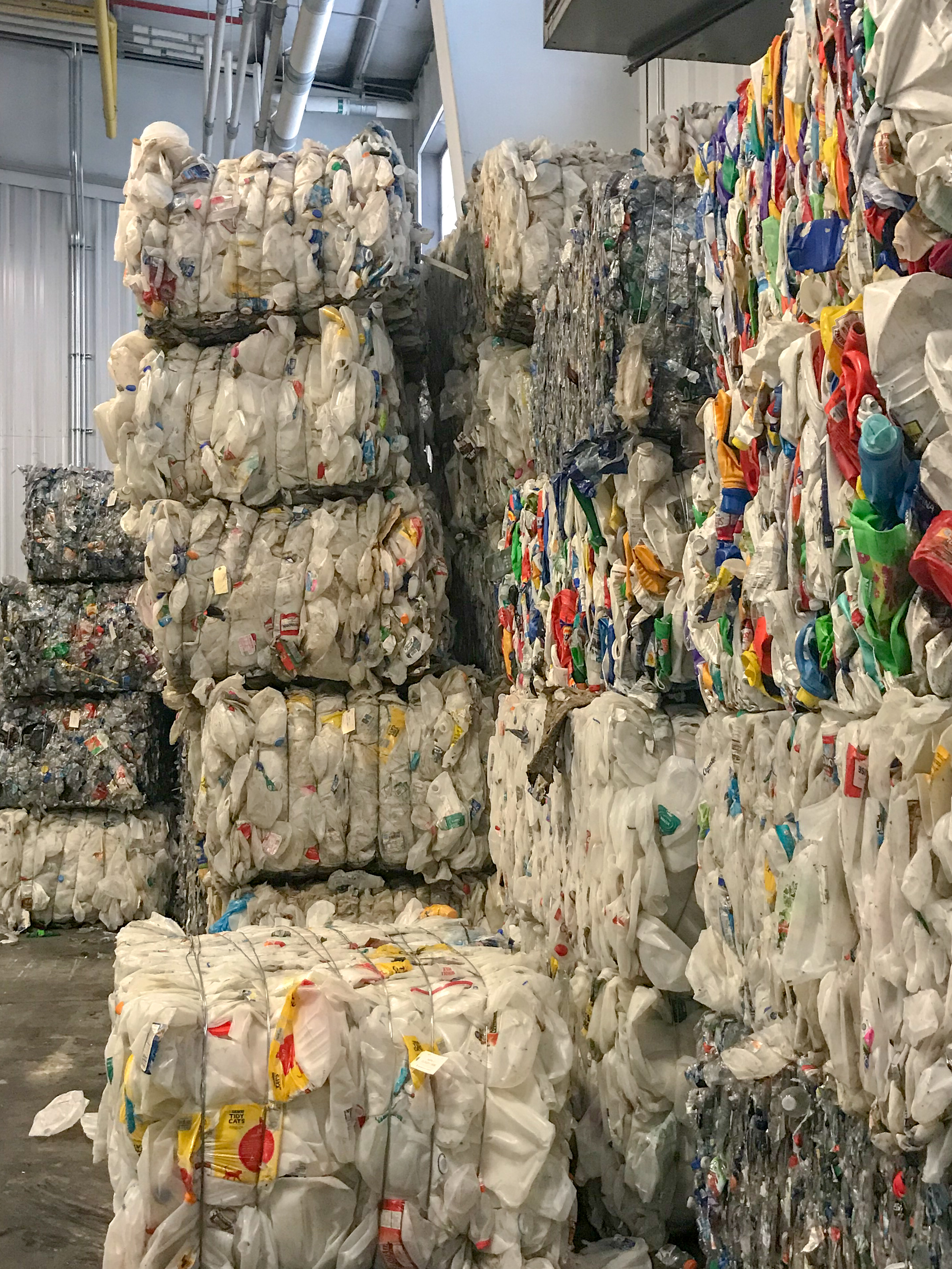Clean Cardboard Initiative improves plastics recycling
Posted by Katie Deska on Apr 12th 2019
Michigan State University’s Surplus Store and Recycling Center (SSRC) has a good reputation among university and public waste recovery facilities, and for good reason—since the on-campus materials recovery facility (MRF) opened in 2009, SSRC reduced the amount of MSU’s general building waste sent to landfills by over 50%. Being strategic in the collections processes is key to diverting even more waste, which is why MSU academic buildings have separate bins for cardboard and plastics. Last semester, SSRC rolled out this Clean Cardboard Initiative to all MSU residence halls, as well.
Individual actions lead to noticeable change
Now, building staff working at campus residence halls keep cardboard separate from plastic, instead of piling the plastic into the cardboard dumpster. While the extra plastics bin takes up more space on the not-so-spacious loading dock, it reduces the amount of hand sorting required and improves the quality of our product. Thanks to this separation, when our drivers pick up the cardboard and tip it onto the MRF floor, we often get a load that doesn’t require much sorting and can quickly be baled. This leaves more time and people-power for sorting different types of plastic, which is the most labor intensive of all commodities. If sorted properly, select plastics can generate additional revenue.


“Since we started the Clean Cardboard Initiative, we have more time to sort the plastics. We do it based on the type of resin, or the number on the bottom,” said Dave Smith, recycling coordinator and operations manager. “For the #3 through #7 plastics we don’t get much at all. But, we get more money for the #1s and #2s—those are your water and pop bottles, and then your milk jugs and other cloudy plastics.”
By separating and selling the plastics that are more valuable, SSRC increases revenue for additional public programming and better utilizes employees’ time and skills.
“It’s really great that we’re actually bringing in money from some of these plastics—it’s really hard to do with plastic not being worth much at all in today’s market. We have to pay to recycle some plastics,” said Sean Barton, SSRC operations supervisor. “Our Clean Cardboard Initiative is really more about plastic than cardboard, but it also protects our cardboard, which is our money maker. There’s a lot of demand and infrastructure for it.”

When SSRC has baled enough cardboard to fill a semi-truck, we arrange a shipment from East Lansing to White Pigeon Paper, near the border with Indiana. There, the cardboard is processed and manufactured into 100% recycled paperboard used in packaging.
For plastics, SSRC works with two brokers. Plastics #1 and #2 head to Clean Tech Inc. in Dundee, Mich., where the material is processed into clear PET pellets and natural HDPE pellets used to make new bottles and other products. "This is bottle-to-bottle recycling," said Smith. Plastic film, like grocery bags, and items marked #3–7 are shipped to Green for Life in Royal Oak, where they too are prepared for the market.

From East Lansing, onward
Post-consumer recycled plastics require less energy to produce than using virgin materials, and recycling keeps them out of landfills or worse -- our waterways. In a recent post about plastics in the Great Lakes, the National Resources Defense Council reported that up to 10,000 metric tons of plastic enters the Great Lakes every year, a figure that was drawn from a 2017 study published in the journal Marine Pollution Bulletin.
While improving recycling at MSU won’t keep plastic out of the Great Lakes, it does make a difference! In FY 2018, SSRC recycled over 900,000 pounds (400 metric tons) of plastic and a whopping 2.7 million pounds (1,200 metric tons) of corrugated cardboard. With help from passionate individuals like you and a dedicated staff, SSRC continues to strive for increased waste diversion by promoting source reduction, providing a community reuse program, and offering 24-hour recycling to the public.

